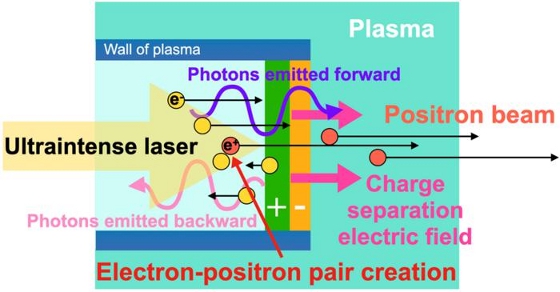 |
| August 15, 2023 | Volume 19 Issue 31 |
Designfax weekly eMagazine
Archives
Partners
Manufacturing Center
Product Spotlight
Modern Applications News
Metalworking Ideas For
Today's Job Shops
Tooling and Production
Strategies for large
metalworking plants
Weird science: Researchers simulate the creation of matter from photon-photon collisions
A team led by researchers at Osaka University and UC San Diego (UCSD) has used simulations to demonstrate how one can experimentally produce matter solely from light, which in the future might help test long-standing theories on the composition of the universe.
One of the most striking predictions of quantum physics is that matter can be generated solely from light (i.e., photons), and, in fact, the astronomical bodies known as pulsars achieve this feat. Directly generating matter in this manner has not been achieved in a laboratory, but it would enable further testing of the theories of basic quantum physics and the fundamental composition of the universe.
In a study recently published in Physical Review Letters, a team led by researchers at Osaka University in Japan has simulated conditions that enable photon-photon collisions, solely by using lasers. The simplicity of the setup and ease of implementation at presently available laser intensities make it a promising candidate for near-future experimental implementation.

Image of self-organized photon collider driven by an intense laser pulse propagating in a plasma. [Credit: Yasuhiko Sentoku]
Photon-photon collision is theorized to be a fundamental means by which matter is generated in the universe, and it arises from Einstein's well-known equation E=mc2. In fact, researchers have indirectly produced matter from light by high-speed acceleration of metal ions such as gold into one another. At such high speeds, each ion is surrounded by photons, and upon grazing past each other, matter and antimatter are produced.
However, it is challenging to produce matter experimentally in modern laboratories through the sole use of laser light because of the extremely high-power lasers required. Simulating how this feat might be achieved in a lab could bring about an experimental breakthrough, so that's what the researchers set out to do.
"Our simulations demonstrate that, when interacting with the intense electromagnetic fields of the laser, dense plasma can self-organize to form a photon-photon collider," explains Dr. Ken Sugimoto, lead author of the study. "This collider contains a dense population of gamma rays, ten times denser than the density of electrons in the plasma and whose energy is a million times greater than the energy of the photons in the laser."
Photon-photon collisions in the collider produce electron-positron pairs, and the positrons are accelerated by a plasma electric field created by the laser. This results in a positron beam.
"This is the first simulation of accelerating positrons from the linear Breit-Wheeler process under relativistic conditions," says Prof. Alexey Arefiev, co-author, from UCSD in the United States. "We feel that our proposal is experimentally feasible, and we look forward to real-world implementation."
Dr. Vyacheslav Lukin, a program director at the U.S. National Science Foundation that supported the work, says, "This research shows a potential way to explore the mysteries of the universe in a laboratory setting. The future possibilities at today's and tomorrow's high-power laser facilities just became even more intriguing."
Applications of this work to the fictional matter-energy conversion technology of Star Trek remain just that: fiction. Nevertheless, this work has the potential to help experimentally confirm theories of the composition of the universe, or perhaps even help discover previously unknown physics.
Source: Osaka University
Published August 2023
Rate this article
View our terms of use and privacy policy
